 How does fast charging work? What time does is cost to refill your battery? Why do we need refill stations on the main-road for electric cars? Read more, for answers on this questions.
How does fast charging work? What time does is cost to refill your battery? Why do we need refill stations on the main-road for electric cars? Read more, for answers on this questions.
The principles
What is fast charging? All batteries, including those in electric vehicles use Direct Current (DC) for charging and discharging. But the electric grid delivers Alternating Current (AC). Therefore AC from the grid needs to be converted to DC so it can be used to charge the battery. This is done by an AC/DC converter.
This AC/DC converter is part of what we call a charger. Chargers can either be integrated into the car as an onboard charger, or chargers can be external to the car, for example a fast charger. Today, virtually all electric vehicles have a small onboard charger. You can use a cable to connect the onboard charger to a regular AC socket in your garage or plug it into a charge pole. The charge pole delivers the AC required for the onboard charger to charge your battery. So a charge pole is not actually a charger but an intelligent socket to plug in your charge cable.
If you want to charge faster, the AC/DC converter and hence the charger need to be bigger. But a bigger charger is heavier, takes up more space in the car and ads complexity and cost to the car. So car manufacturers usually choose a relatively small , and therefore a slow onboard charger to optimise between these factors.
Fast charging is different
An external charger that does the AC/DC conversion is a lot bigger, heavier (around 400 kg) , more complex and more expensive than an onboard charger. But it is also a lot faster. That is why they are usually referred to as ‘DC fast chargers’ or just ‘fast chargers’. A typical fast charger that is available today, delivers 50 kW which charges about 5 to 15 times faster than an onboard charger. The next generation of ultra fast chargers will deliver 150 kW and might be upgraded later to 350 kW. (More on this in Part III.)
How fast charging works
Actually a single unit of a battery is a cell. A battery is called a “battery”, because it is a “battery” of cells together. Each cell will have a characteristic voltage range between charged and discharged that is set by the electrochemical nature of the metals used and the reactions that go on in the solution, gel, wet powder, etc. between the plates. A car battery consists of many small batteries. A car battery is thus quite similar to a rechargeable battery you use at home, only bigger. Together with all wiring and packaging the batteries form the battery pack as depicted below.
Today’s battery packs are designed with fast charging capability. For example the powertrain of the BMW i3 is rated at 125 kW peak power and 75 kW continuous power while fast charging is done at 50 kW.
Battery life
The battery pack of a car is never used 100%. The usable capacity of the 21.6 kWh i3 battery pack is around 19 kWh. The reserve of 2.6 kWh is used to ‘cushion’ the impact of charging and discharging. The battery pack automatically cycles between around 5% and 95% of the battery pack. All of this is handled by the Battery Management System (BMS) and completely hidden from the driver.
There are many factors influencing battery life including heat, battery age, duration of keeping a battery fully charged and number of charge discharge cycles. Research shows that exclusive use of fast chargers hardly affects battery life when tested with the Nissan Leaf MY2012. And other research indicates that fast charging might actually be better for battery life. As a general rule, a battery will last longer when its size increases because fewer charge and discharge cycles are needed for the same mileage.
Charge speed
During fast charging there is continuous communication between the BMS and the fast charger. The BMS instructs the fast charger to set the charging speed. This speed is usually expressed in kilowatt (kW). Charging a car for 1 hour at 50 kW puts 50 kWh into the battery pack. On average, a fast electric car uses 1 kWh to drive 5 km. Tesla also expresses the charge speed in km/hour. So 50 kW equals about 250 km/hour (‘250 km of range charged in 1 hour’).
P = V * I
Power (expressed in Watts) is the product of voltage (Volts) and current (Amps). When charging at 50 kW this is typically done at 400 V and 125 A (400 * 125 = 50.000 W = 50 kW). Note that this means that the charge speed is influenced by both the voltage and the current.
You can compare charging electricity with running water from a tap. Think of voltage (V) as the water pressure and current (A) as the size of the tap. If you increase the pressure more water will flow, and the same is true when increasing the size of the tap.
The voltage is a characteristic of a battery. Most car battery packs today operate at around 400 V when fully charged. But when a battery pack is not fully charged, the voltage will be lower, for example 325 V. Voltage will gradually increase while charging, so this has a positive effect on the effective charge speed (see the blue line in the graph below showing a fast charge session of a 30 kWh Nissan Leaf).
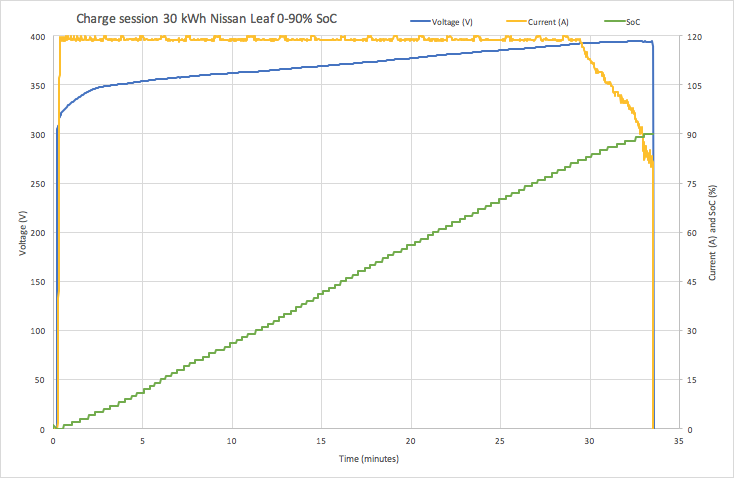
0–90% charge of a 30 kWh Nissan Leaf
The current can be increased or decreased by the fast charger based on data received from the BMS (see yellow line in the graph). Most fast chargers can provide a maximum current of 125 A, but Tesla superchargers and the upcoming 150 kW CCS chargers can provide more than 300 A.
What influences charge speed?
Now let’s take a look at the factors that have an effect on the charge speed other than voltage. There are four main aspects:
1. Battery pack capacity.
In general, a larger battery pack can be charged faster. So a Tesla Model S with a large 90 kWh battery can be charged at higher power than a BMW i3 with a 21 kWh battery. This is also the main reason why the current crop of Plug-in Hybrid Electric Vehicles (PHEVs) cannot charge fast: their battery packs are simply too small. Most PHEV manufacturers do not include the additional hardware (e.g. extra inlet and wiring) in the car.
2. State of Charge (SoC).
When the battery is almost fully charged, the charge speed drops to prevent the battery cells from overheating. Typically at 80–90% SoC the speed drops and charging will slow down further closer to 100% SoC. That is the reason why fast charging is most effective between 0% and 80–90% SoC.
3. Battery temperature.
Battery cells operate most effectively between 20–25 degrees Celcius (68–77 degrees Fahrenheit). When battery temperature is too low or too high, the BMS reduces the requested current to protect the health of the battery cells. If the battery pack is equipped with a heating or cooling system the BMS will activate this system in order to control the cell temperature. Note that battery temperature is not only influenced by the outside temperature, but also driving and charging can increase the battery temperature.
4. Power level of the fast charger.
There can be several reasons why a fast charger cannot provide full power. For example the grid connection might not be sufficient for the charger to operate at full power. Or the fast charger needs to share the available grid connection with other chargers on the same location. In that case the chargers will communicate with each other to ensure that the total power used does not exceed the available power of the grid connection. At a Tesla supercharger site two stalls (chargers) typically share their capacity. So if one car charges at full power, there is limited power left for the other car. At Fastned stations, all chargers can work at full power, because we ensure the grid connections are sufficient to deliver peak capacity.
Electric vehicles share a lot of similarities when it comes to the factors that influence charge speed, but the exact impact of each factor differs. For example the 30 kWh Nissan Leaf is able to charge to 90% in the same time as the previous 24 kWh version did. And the BMW i3 can actively heat and cool its battery so temperate will have less impact.
The exciting future of fast charging
Currently there are just two open fast charging standards: “CCS” and “CHAdeMO”.

Combined Charging System (CCS) was developed by seven car makers and was designed for charging up to ~80 kW (at 400V). The standard is currently promoted by CharIN and is backed by major European and US car makers.

CHAdeMO was already developed in 2010 by the CHAdeMO Association and was an initiative of Japanese car makers. The initial design allowed for charging at up to ~50 kW (at 400V).
Fastned is a member of both organisations and we offer these standards at all of our stations. Please note that Tesla has a proprietary charging protocol for their Superchargers, which can fast charge up to 130 kW. Because the Tesla protocol is not open, fast charger manufacturers cannot include Tesla plugs in their chargers. To get around this problem, Fastned installed Tesla CHAdeMO adapters at all Fastned stations.
Most fast chargers currently can charge electric vehicles up to 50 kW. Some car manufacturers have introduced electric vehicles for faster charging:
KIA introduced the Soul EV in 2014 with support of charging up to 100 kW using CHAdeMO, demonstrating that charging faster than 50 kW was possible. However, no infrastructure of 100 kW CHAdeMO fast chargers was available due to the lack of an official higher powered CHAdeMO standard.
BMW, Nissan, Volkswagen and Ford confirmed battery upgrades in 2016 for existing EV models. This may open the possibility that they implement fast charging up to ~80 kW, within the existing CCS standard.
Hyundai announced the introduction of the full electric Ioniq Electric and confirmed that it would be able to charge at up to 100 kW using CCS.
General Motors brings the Chevrolet Bolt EV to Europe as the Opel Ampera-e. Officially the Ampera-e supports 50 kW CCS fast charging. It may be prepared for charging up to 80 kW using CCS.
Cars supporting 50+ kW charging are currently capped at 50 kW. They will start to benefit when the next generation of fast chargers is deployed. However, most fast charger manufacturers decided to skip the intermediary step of 100 kW fast charging. Instead, they will move directly to include 150 kW support.
The next generation of ultra fast chargers
German car manufacturers such as Volkswagen, Audi and Porsche, seem to agree that ultra fast charging is critical for the adoption of electric cars. CharIN is currently working on enhancing the CCS standard to support 150 kW charging by increasing the maximum current (Amperage). Several car makers want to increase the charging speed by increasing the maximum voltage as well. The next CCS standard will therefore allow speeds up to 350 kW! Porsche’s Mission E could be the first electric car to take advantage of this enormous power, setting the new “fast charging standard” for all electric cars.
The next CCS standard will allow speeds up to 350 kW. Porsche’s Mission E could be the first electric car to take advantage of this enormous power, setting the new “fast charging standard” for all electric cars.
At the Frankfurt Auto Show of 2015, Audi revealed the Q6 e-tron quattro concept. This full electric Audi is able to charge at 150 kW and will go into production in 2018. At the same show, Porsche presented their Mission E concept which is scheduled for 2019 and supports charging at 300+ kW. Both cars feature a large battery of at least 90 kWh and a real world range of 500 km. These announcements show that the race for faster charging is on. It’s also clear by now a network of ultra fast charging stations will precede the introduction of these next generation electric cars.
Japanese car makers are also working on higher fast charging speeds. The CHAdeMO Association announced the 150 kW standard in June 2016. The next generation Nissan Leaf *might* be the first car to support 150 kW using CHAdeMO.
For both CCS and CHAdeMO, 150 kW fast charging would be a big step forward. If fully realised, this speed surpasses that of Tesla Superchargers.
Deploying next generation charging infrastructure
Many Fastned stations are already prepared for 150 kW chargers. Fastned has grid connections that support charging 4 cars simultaneously at 150 kW. Other Fastned stations can easily be upgraded with a larger grid connection as well. More capacity can be added in the future by introducing on-site battery buffering and/or by further increasing the capacity of the grid connections. The layout of the stations is already designed for maximum throughput of cars.
The expectation is that the first 150 kW chargers in 2017 are available, depending on introductions of cars with 150 kW capability by the car makers.
Fast charging, station capacity and economies of scale
Charging an electric car will be a mix of home charging, destination charging (at work, a supermarket, hotels, etc.), public slow charging and public fast charging.
As we move towards a larger share of pure EVs on the road, its increasingly important to think about the “total cost of infrastructure” to charge these cars. Economies of scale can dramatically lower the cost to operate a network of fast charging stations and thus lower prices for consumers. Well designed fast charging stations can expand station capacity with an order of magnitude.
Besides economies of scale, there are other distinct advantages of clustering fast chargers on a single site. Fast charging stations with multiple chargers can provide great brand visibility and thus drive growth at high-traffic locations. Stations with a roof also provide shelter and can generate electricity through solar panels, moreover it makes it easier to provide additional services in the future.
Capacity of fast charging stations
Stations with two typical 50 kW fast chargers can provide a conservative maximum of 560 kWh per day. This enables ¬2.800 km electric kilometers per day. Based on the historical data of fast charging behaviour of customers:
(1) Fast charging stations are mostly used between 07:00 and 23:00 — 16 hours of use per day.
(2) A maximum of 50% utilisation during the hours of use (half of the chargers are in use during these 16 hours).
(3) On average an EV charges at 70% of the maximum that a fast charger can provide (not all EV’s will be able to charge at full speed for the entire charge session).
In the coming years, more EVs become capable of charging at 150 kW. With more powerful chargers a single station can serve more EVs. Now let’s see what happens when we upgrade a 2×50 kW station to 4×150 kW or to 8×150 kW:
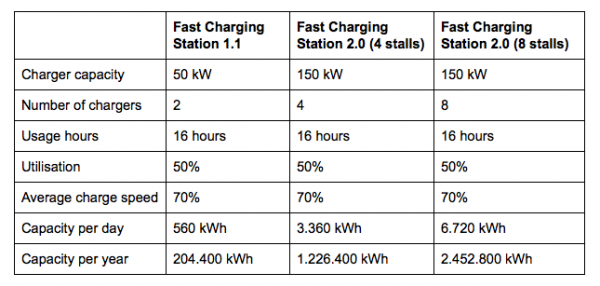
An existing station has a capacity of 204.000 kWh annually and an upgraded station more than 1.2 million kWh. A next generation station thus provides 6X more capacity on the same land area, and 12X more capacity with 8 chargers. That’s an order of magnitude improvement.
The economics of faster charging stations
The kWh capacity of a station 2.0 is six to twelve times that of a current fast charging station. However, the one-off costs (CAPEX) such as permits, grid connection, equipment, construction, installation and project management of a station equipped with four 150 kW chargers are far below that of constructing five to eleven additional stations. Recurring costs (OPEX) such as technical maintenance and cleaning are only slightly higher for the 2.0 station. Capacity thus rises much faster than costs do. Therefore the cost per kWh can decrease.
Another advantage lies in maximizing the use of a single grid connection. In many countries electricity prices are heavily taxed. Many of these taxes are regressive: the more you use per grid connection, the less you pay per kWh.
Can the grid handle this? As long as fast charging stations are connected to medium voltage rings (10kV or 20kV), station power can be scaled up in line with the expected exponential take-off of electric cars. Supermarkets, high rise office buildings and large warehouses are routinely connected to the medium voltage grid with Megawatt connections. Fast charging stations are comparable in power draw and are well within the limits of the capacity of the medium voltage grid.
More chargers, less waiting
The other fundamental advantage of large fast charging stations is reduced waiting time. If we assume an average of 30 minutes to charge a vehicle, an occupied stall on average results in 15 minutes of waiting time for the next EV driver. With two chargers this is reduced to 7,5 minutes and with 4 chargers to less than 4 minutes. So a station equipped with multiple fast chargers greatly reduces waiting times.
More chargers also improve availability of the station. EV drivers must be able to depend on fast charging stations. Even when a single fast charger has an uptime of 99%, then the charger is still unavailable for 3.6 days per year. For a station equipped with two fast chargers with both 99% uptime, the time that both chargers are unavailable at the same time is reduced to less than 1 hour per year since both fast chargers operate independently of each other.
An added advantage of connecting fast charging stations to medium voltage rings is greater availability during power outages, because the station transformer can be fed from both sides of the ring.
See here how to download the App and how pay to refill your car. On the stations is free WIFI available.
Wie funktioniert das Schnellladen bei Fastned?
Roland van der Put is Fastned CTO. As head of the Network Operations Center he ensures a high uptime of the fast chargers and ICT systems. Source: FastNed.
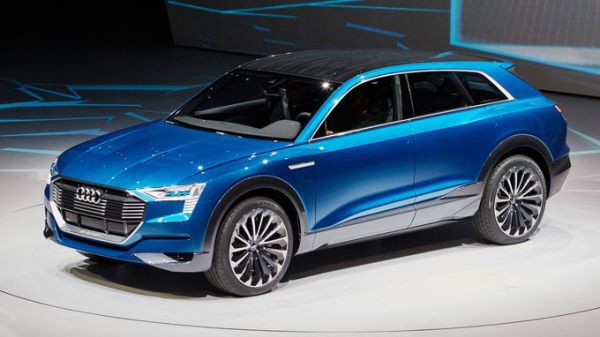
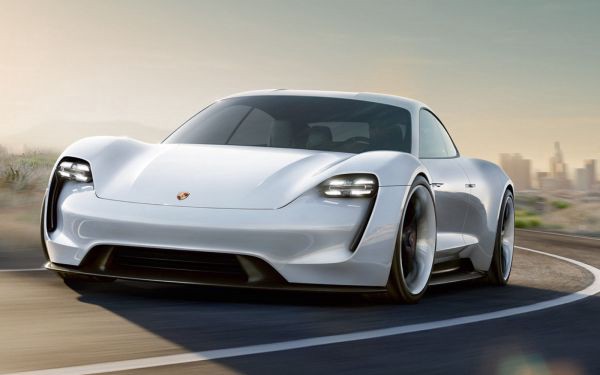
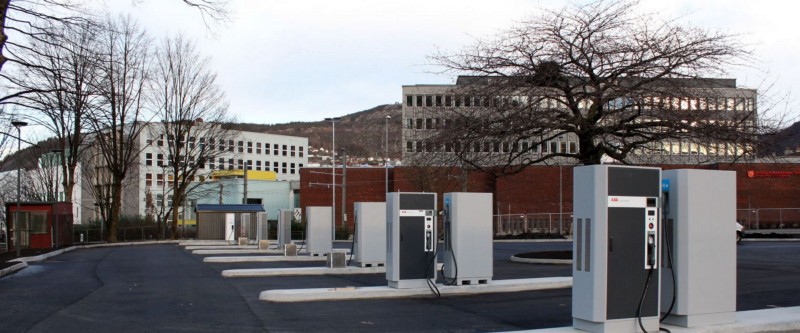



January 1st, 2018 at 5:41 pm
thanks for the valuable information.
July 15th, 2018 at 6:58 am
Very nice summary.
You should consider doing a write up on the race to release new battery cell technologies that are linked to Long-Range / Fast-Charging EV’s.
Solid State type Hybrids (with High Energy Density) … including next generation Lithium Ion and the new Carbon Ion (Graphene) batteries?
The big changes in EV charging points are all linked back to the amazing developments in battery cell technology …
The next generation of Charging Stations will include Energy Storage Systems for Buffering.
Station Buffering allows the Fast Chargers to deliver multiple high peak 150kW or 350kW charges without impacting the supply from the grid.
July 15th, 2018 at 7:37 am
Thanks! I am no expert on battery cell technology but I’m sure many more improvements will come.
Meanwhile the original blog has been updated and can be found here: https://fastned.nl/nl/blog/post/everything-you-ve-always-wanted-to-know-about-fast-charging
We also wrote a new blog on the integration of fast charging stations in the grid: https://fastned.nl/nl/blog/post/why-fast-charging-stations-are-good-for-the-grid
January 15th, 2019 at 4:04 pm
Excellent article on an exciting new technology
February 19th, 2022 at 12:36 pm
For charging and discharging, all batteries, including those in electric cars, use Direct Current (DC). However, the electric grid provides Alternating Current (AC). As a result, the AC from the grid must be converted to DC before it can be utilized to charge the battery.